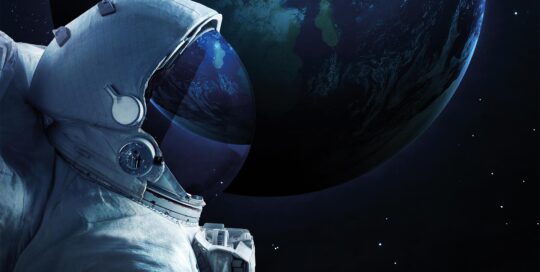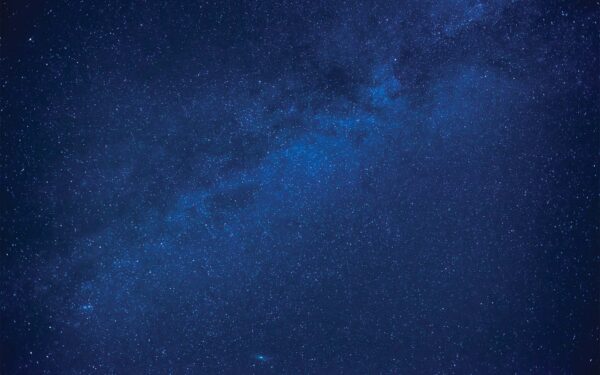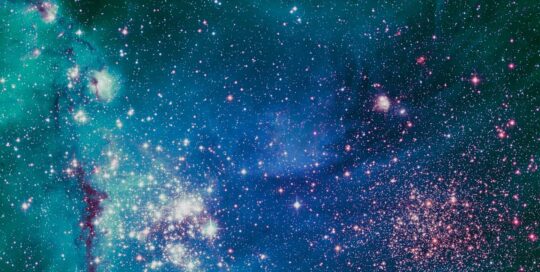Already home to more than 100 space-related organisations, South Australia is committed to further growing the local industry and building on the state’s strong history of space activity.
In September 2017 the South Australian Government created the South Australian Space Industry Centre (SASIC) to drive space industry innovation, research and entrepreneurial development.
SASIC provides a whole-of-state-government focal point for both local industry and international companies and organisations. With a team of staff from Defence SA, Department for Trade and Investment, and Department for Innovation and Skills, SASIC coordinates and implements industry and workforce development through initiatives, events, scholarships and an incubator program.
The space industry challenges the innovative skills of our best researchers and engineers and it inspires young people to develop the skills to push forward the frontiers of scientific knowledge.
The growth of space and sustainable defence industries in South Australia plays a key role in the State’s economic development. Capabilities and expertise are concentrated on: earth observation, satellite communications and space-based position, navigation and timing. These space enabling services support activities across a variety of sectors including communication, environmental monitoring and mapping.
The space industry contributes to the development of other priority sectors for South Australia including defence, agriculture, mining and tourism, as well as services for the community such as health and education.
In 1947 the Woomera Rocket Range was established in South Australia on the Arcoona plateau as part of an agreement between the British and Australian governments under the Anglo-Australian joint project. The Range was established to develop long-range missiles in response to the threat of attacks on London in WWII and the developing cold war in Europe. Over 4000 short-range missiles were tested between 1947 and 1980.
South Australia hosted significant research into space through the launching and monitoring of over 250 Skylark sounding rockets over 20 years. The experience enabled Australian research teams to develop the Australian-designed Long Tom sounding rocket which was used to develop instrumentation at Woomera and to study the upper atmosphere.
In November 1967 the Australian-built Weapons Research Establishment Satellite (WRESAT 1) was successfully launched into orbit from Woomera on board a modified US Redstone rocket (the same type used to launch the first US astronauts into space). This made Australia the third country, after the US and the USSR, to launch a satellite to orbit from its own territory.
Several international space programs continued in South Australia throughout the 1990s. 1995 saw the start of the Express mission, a collaborative program between Germany and Japan to land an unmanned re-entry capsule at Woomera. The spacecraft was launched from Kagoshima Space Centre in Japan on 15 January 1995. Although the landing did not eventually happen at Woomera due to technical problems, Australian support during this mission pioneered the approach for future spacecraft programs at Woomera.
In May 1996, South Australian-born astronaut Dr Andy Thomas conducted his first trip into space on the Space Shuttle Endeavour. He logged a total of 178 days in space during his career.
Between 2002-2004 the Japanese Aerospace Exploration Agency (JAXA) conducted the National Experimental Supersonic Transport (NEXST) flight trials at Woomera. JAXA undertook significant upgrades at Woomera with extensive support from the Royal Australian Air Force and Adelaide aerospace companies. Further upgrades to Woomera were confirmed in 2016 over 10 years which will transform the Woomera Range Complex into the most sophisticated land-based test range in the world.
In 2011 the University of South Australia commenced the Southern Hemisphere Space Studies Program in collaboration with the International Space University (ISU). The program is a unique, five week live-in experience focusing on an international, intercultural and interdisciplinary educational philosophy for which the ISU is renowned.
In April 2017, Adelaide University and the University of South Australia teamed up to develop one of 50 CubeSats as part of the global QB50 initiative, one of four Australian satellites to be built in over 15 years. Australia’s future in space looks promising and is set to reach new heights.
In late September 2017, the Australian Government confirmed that it would create a new national space agency after repeated calls from the South Australian space sector. The formation of the agency promised to create an opportunity for Australia to increase its share of the then $420 billion global space industry. Detailed plans for Australia’s future in space were outlined at the International Astronautical Congress in Adelaide in the same month.
In December 2018, it was announced that Adelaide, South Australia would be home to the newly established Australian Space Agency, with the national headquarters to be located at Lot Fourteen. The decision reinforced state’s long-standing contribution to Australia’s space journey. The announcement was made in conjunction with the Adelaide City Deal, which saw the Federal and State government sign a Memorandum of Understanding committing to growing Adelaide’s economy.
In April 2019, it was announced that South Australia would host the SmartSat Collaborative Research Centre (CRC), a $245 million research effort focused on growing the nation’s space capability. The CRC, which us a consortium of over 85 industry, government and research organisations led by Uni SA and Nova Group, received a $55 million funding boost from the Australian Government. The CRC focuses on research and development initiatives in intelligent satellite systems, advanced communications and Earth Observation analytics.
On 6 December, the Japanese Aerospace Exploration Agency (JAXA) welcomed the return of the Hayabusa II satellite at the Woomera Test range in outback South Australia. The satellite returned after spending seven years in space analysing and surveying asteroid 162173 Ryugu. A delegation from JAXA travelled to South Australia to recover samples collected by the satellite, before returning with them to Japan for analysis.
The Australian Space Discovery Centre and Mission Control Centre formally opened in the heart of Adelaide at Lot Fourteen. The facilities mark another milestone for South Australia’s space ecosystem, further cementing the state as the nation’s home of space innovation.
The Australian Space Agency awarded Australia’s first launch facility licence for Southern Launch’s Koonibba Test Range. This was followed by a second launch facility licence in July 2021 for Southern Launch for its Whalers Way Orbital Launch Complex.
In the 1950s larger Blue Streak missiles were developed and large testing and launcher sites were constructed on the edge of Lake Hart. Although the weapons program was abandoned, the Blue Streak rocket became the first stage of the Europa rocket, developed jointly by Britain, France, West Germany, Belgium, Italy and the Netherlands, under the European Launcher Development Organisation Program (ELDO). The program launched 10 rockets between 1964 and 1970.
In 1957 a Minitrak satellite tracking station and Baker-Nunn satellite tracking camera were established in Woomera, starting a long association between Australia and the United States (US) in the field of space tracking. In 1960 NASA established a deep-space instrumentation facility at Island Lagoon and a Mercury spacecraft communication station at Woomera. The tracking and communications facilities proved South Australia as an ideal location for space-support activities due to its geographic location, large testing areas and growing expertise in supporting space activities.
In 1971 Britain’s BLACK ARROW rocket launched from Woomera carrying the satellite Prospero into polar orbit where it will remain until around 2070.
Also in 1996 a total of 13 Japanese Automatic Landing Flight Experiment (ALFLEX) landing trials took place over a range of experimental conditions, with all being spectacularly successful. The Japanese also established four 10m space satellite telescopes to the north of the Woomera airfield to study high energy Gamma Rays.
In 1996 US company, Kistler Aerospace Corporation developed Kistler K-1, one of the first ever fully reusable launch vehicles. Kistler had a contract for 10 satellite launches worth over $150 million. Woomera was chosen over Nevada to be the first site for the test launches.
In 2010, South Australia was the landing site for Hayabusa 1, the first unmanned spacecraft to return to Earth. The Hayabusa 1 spacecraft was launched by JAXA on 9 May 2003 from Kagoshima Space Centre to collect a sample from the asteroid Itokawa. The rendezvous with Itokawa was accomplished with pin-point precision in September 2005. The recovery of the capsule followed a spectacular re-entry sequence over the South Australian desert. Following the success of the first mission, Hyabusa 2 was launched in 2014 and is due to return to Woomera in 2020.
Since the creation of the space office in 2016, the South Australian state government has provided extensive support to nurture the growth of space enterprise, education and research in South Australia, establishing Adelaide as a thriving space hub.
In September 2017, the South Australian Space Industry Centre (SASIC) was officially established by the South Australian Government. The new centre was set up to build on the work of Defence SA’s Space and International R&D Collaborations team and take ownership of progressing South Australia’s space strategy. The SASIC team continues to sit within Defence SA and reports directly to the Defence SA Chief Executive.
From 25 to 29 September, Adelaide hosted the 68th International Astronautical Congress, the world’s largest annual gathering of space professionals hosted by the International Astronautical Federation and the Space Industry Association of Australia. The event provided South Australia with the opportunity to promote its space capabilities, provided a platform for local hi-tech companies, research organisations and universities, and allowed the encourage STEM career opportunities.
In March 2019, the Federal Government announced that they would commit $12 million in funding towards establishing a national Mission Control Centre at Lot Fourteen, co-located with the Australian Space Agency headquarters. The centre would eventually provide local companies and research organisations with the facilities to control small satellite missions, enable real-time control and test emerging satellite technology.
September 2020 saw Adelaide companies Southern Launch and DEWC Systems enter the history books when they launched Australia’s first space capable rocket to the edge of space from the Koonibba Test Range in outback South Australia. Two rockets, developed in collaboration with Netherlands company T-Minus Engineering, were launched carrying a DEWC prototype electronic warfare unit capable of detecting radar signals into the thermosphere where they were released before falling back to earth.
The South Australian Government announced a partnership with the SmartSat CRC, Inovor Technologies and Myriota to send a locally manufactured small satellite to low Earth orbit in 2022 – the first State Government to ever embark on such a mission. The $6.5 million SASAT1 Space Services Mission will improve state services like emergency services, water quality monitoring, mining and bushfire mitigation. The satellite has been named Kanyini, a Pitjantjatjara word submitted by Findon High School students in a naming competition, meaning responsibility and unconditional love for all of creation.
South Australia’s involvement with space dates back to 1947 with the establishment of the Woomera Rocket Range. It is now home to leading-edge research and development in satellite and space technologies. In April 2016 South Australia released the first space strategy of any Australian jurisdiction. In 2017 it hosted the world’s largest space exhibition, the International Astronautical Congress. The South Australian Space Industry Centre (SASIC) was created in September 2017 to support the growing space ecosystem as the state propels into a new world of space technology and with the opening of the Australian Space Agency headquarters in Adelaide in February 2020, the state is at the centre of our nation’s future space industry development.
Video credit: Campfire Content





